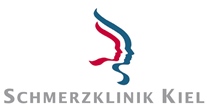Together against pain: The patient seminar
The migraine patient seminar (MIPAS) developed by Prof. Gerber and me aims to provide comprehensive neurobehavioral medical care for pain patients by doctors. The care refers to both the non-drug prevention and treatment of headaches, as well as specific drug prophylaxis and therapy based on a scientifically holistic approach. Through comprehensive training and further education, we also want to enable doctors to conduct group consultations as part of a patient seminar.
The patient seminar for chronic headaches is based on models of similar group consultations. The basic ideas are to pass on the information in a compact form to those affected, to initiate self-help groups and to enable effective interactive treatment through the mutual exchange of information between group members. Organizationally, the patient seminar is ideally a patient event led by a doctor and a psychologist, which is held, for example, on a weekday for 60 to 90 minutes in a small group of problem patients (approx. 5 to 10 participants) with comparable illnesses. The patient seminar should be implemented as follows:
- Group formation: In an individual discussion, the doctor should select eligible patients, inform them about the patient seminar and motivate them to participate. Self-monitoring measures are explained. A headache diary is given.
- Group-specific initial discussions then take place in the first sessions. The symptoms of the individual headache disorders are discussed with the patients and the level of suffering, as well as the developmental history and chronification factors are worked out. In particular, chronic factors, the various behaviors that conflict with the treatment of headaches, and behavioral patterns in everyday life should be recorded and analyzed.
- Explanation of the diagnosis by the doctor and information about the conditions that caused it: In this session, the underlying mechanisms of the headache disorder are explained to patients. Based on this, you will be taught appropriate structured steps to treat your headaches. The patients are made aware of not only biological but also psychological and behavioral processes. This includes in particular stress, unfavorable thoughts, behavior patterns and others.
- Consultation and group discussion: In this section of the patient seminar, further information is conveyed interactively in the group. In addition to the individual stimulus conditions, lifestyle factors such as irregular sleep, daily planning, stress, workplace design, etc. should be discussed. The basis of the conversation here is a specific stress analysis form, which, in conjunction with a headache checklist, is used to identify the various conditions for headache attacks. Already in this session, the patients are shown a combined treatment strategy - the connection between non-medicinal and medicinal procedures.
- Medication discussion: In this session, the medication history, the way medications have been taken so far, effects and side effects, as well as attitudes towards medications are discussed in detail. At the same time, the particular importance of self-regulatory mechanisms such as pain control, stress management, etc. is pointed out.
- Stress analysis I: At the beginning of the session, the particular importance of stress factors and unfavorable attitudes and behavior patterns is pointed out. To do this, patients fill out special stress analysis forms, whereby the stressors are arranged hierarchically. Stress and strain are also explained in terms of psychobiological concepts. For example, it is shown that certain techniques, such as relaxation techniques, can break down nerve messengers better and faster. On this basis, it is explained to patients that specific body awareness is necessary. In this sense, progressive muscle relaxation according to Jacobson is explained to patients. The effect of stress factors on the body is introduced virtually close to the body through targeted stress inductions, such as a stressful film. It should then be made clear that during extreme stress, patients perceive body signals, such as pressure sensations in the forehead, which they can counteract with appropriate relaxation techniques. The relaxation exercises that follow are also provided to each patient as a compact disc (CD) for them to practice at home. In addition to the CD, patients receive an exercise log in which they should enter exercise times.
- Stress analysis II: In this session, the patients are first guided to deep relaxation in a detailed relaxation exercise. As in other previous sessions, the headache diaries are discussed. Any difficulties that may arise with medication or with Jacobson training are first explained to the group. This session is aimed at being able to use relaxation techniques in a differentiated manner. This means that patients learn to initiate relaxation reactions through brief tension in everyday situations, for example when sitting, walking, standing or speaking. Now a stress induction occurs, such as the ringing of a telephone, in order to test possible counter-effects. Various stressful situations in everyday life are now played through, such as discussions, arguments, self-assertion situations, etc. The patients learn to react to physical sensations with relaxation exercises.
- Pain management and conclusion: This session is aimed at pain management (pain management training). First, the patients describe their last seizure or the last seizure. They are then asked to act out their seizures again. Using specific techniques (e.g. imagery), patients should work together to develop strategies on how to end an attack without or with medication. The patient seminar ends with a summary and an agreement to meet again for refresher sessions if necessary. At the same time, patients should be encouraged to attend a self-help group on their own initiative or, if there is a lack of availability, to set one up themselves.



